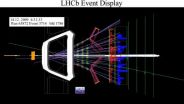(Press-News.org) Obesity increases the risk of myeloma, a cancer of plasma cells that accumulate inside the bones.
And with current obesity trends in the United States and especially in South Texas, that's ominous.
"I'm predicting an increase in multiple myeloma," said Edward Medina, M.D., Ph.D., "and with the obesity problems we see in the Hispanic population, there could be a serious health disparity on the horizon."
Dr. Medina, a hematopathologist and assistant professor in the Department of Pathology at The University of Texas Health Science Center at San Antonio, is looking at exactly how obesity causes an increased risk for myeloma.
What he and his colleagues have discovered is a potential way to not only boost the effectiveness of current chemotherapy treatments for myeloma, but at the same time a way to help the body help itself.
In a paper published this week in the journal Leukemia, Dr. Medina and his team look at an important little protein called adiponectin.
Myeloma is often called multiple myeloma because it occurs at many sites within the bone marrow. Healthy plasma cells produce antibodies that fight infection in the body, but myeloma cells produce high levels of abnormal antibodies that, when the cancer cells accumulate, they crowd out production of other important blood cells, both red and white.
"They basically overtake the bone marrow," Dr. Medina said.
The disease can lead to bone pain and fragility, confusion, excessive thirst and kidney failure. While survival rates for patients with myeloma have increased in recent years, many people do not live more than five years beyond diagnosis.
Adiponectin is a protective protein that plays several roles in keeping the body healthy, including killing cancer cells. While adiponectin is produced by fat cells, Medina said, obese people have less of it. The reason for this paradox is that in cases of obesity, fat cells function abnormally, including producing less adiponectin. What they produce more of, however, are fatty acids, and it is likely that myeloma cells can feed on these fatty acids.
"Synthesizing fatty acids is important for myeloma cells to build vital structures, including cell membranes, that enable them to keep on growing," Medina said.
Focusing on adiponectin led Dr. Medina's lab to protein kinase A or "PKA" — a protein that, when activated by adiponectin, suppresses the fatty acids that myeloma cells need, leading to their demise.
The idea is to use the understanding of the pathways that adiponectin uses to kill myeloma cells to create a drug that would do the same thing.
"If we could pharmacologically suppress these fatty acid levels in obese myeloma patients, we could boost the effects of the chemotherapy that targets PKA or fatty acid synthesis, and potentially decrease the chemotherapeutic dose," Medina said. "Also, it would give your own body's protective measures more of a chance to work against the cancer."
INFORMATION:
For current news from the UT Health Science Center, please visit our news release website or follow us on Twitter @uthscsa.
The Cancer Therapy & Research Center (CTRC) at The University of Texas Health Science Center at San Antonio is one of the elite academic cancer centers in the country to be named a National Cancer Institute (NCI) Designated Cancer Center, and is one of only four in Texas. A leader in developing new drugs to treat cancer, the CTRC Institute for Drug Development (IDD) conducts one of the largest oncology Phase I clinical drug programs in the world, and participates in development of cancer drugs approved by the U.S. Food & Drug Administration. For more information, visit http://www.ctrc.net.
New myeloma-obesity research shows drugs can team with body's defenses
2014-05-02
ELSE PRESS RELEASES FROM THIS DATE:
AGA unveils latest advances in GI research at DDW 2014
2014-05-02
Chicago, IL (May 2, 2014) — International leaders in the fields of gastroenterology and hepatology will gather together for Digestive Disease Week® (DDW) 2014, the largest and most prestigious gastroenterology meeting, from May 3 to 6, 2014, at McCormick Place in Chicago, IL. DDW is jointly sponsored by the American Gastroenterological Association (AGA) Institute, the American Association for the Study of Liver Diseases (AASLD), the American Society for Gastrointestinal Endoscopy (ASGE) and the Society for Surgery of the Alimentary Tract (SSAT).
AGA researchers will present ...
Nature's chemical diversity reflected in Swedish lakes
2014-05-02
It's not only the biology of lakes that varies with the climate and other environmental factors, it's also their chemistry. More knowledge about this is needed to understand the ecology of lakes and their role in the carbon cycle and the climate. Today an international research group led by Uppsala University is publishing a comprehensive study of the composition of organic compounds in the prestigious journal Nature Communications.
- Lake water is like a very thin broth with several thousand ingredients in the recipe, all with different properties. At the same time ...
Stimulated mutual annihilation
2014-05-01
Twenty years ago, Philip Platzman and Allen Mills, Jr. at Bell Laboratories proposed that a gamma-ray laser could be made from a Bose-Einstein condensate (BEC) of positronium, the simplest atom made of both matter and antimatter (1). That was a year before a BEC of any kind of atom was available in any laboratory. Today, BECs have been made of 13 different elements, four of which are available in laboratories of the Joint Quantum Institute (JQI) (2), and JQI theorists have turned their attention to prospects for a positronium gamma-ray laser.
In a study published ...
Syracuse University physicists confirm existence of new type of meson
2014-05-01
Physicists in the College of Arts and Sciences at Syracuse University have made several important discoveries regarding the basic structure of mesons—subatomic particles long thought to be composed of one quark and one antiquark and bound together by a strong interaction.
Recently, Professor Tomasz Skwarnicki and a team of researchers proved the existence of a meson named Z(4430), with two quarks and two antiquarks, using data from the Large Hadron Collidor beauty (LHCb) Collaboration at CERN in Geneva, Switzerland. This tetraquark state was first discovered in Japan ...
Investigators find something fishy with classical evidence for dietary fish recommendation
2014-05-01
Philadelphia, PA, May 1, 2014 – Oily fish are currently recommended as part of a heart healthy diet. This guideline is partially based on the landmark 1970s study from Bang and Dyerberg that connected the low incidence of coronary artery disease (CAD) among the Eskimos of Greenland to their diet, rich in whale and seal blubber. Now, researchers have found that Eskimos actually suffered from CAD at the same rate as their Caucasian counterparts, meaning there is insufficient evidence to back Bang and Dyerberg's claims. Their findings are published in the Canadian Journal ...
Atypical form of Alzheimer's disease may be present in a more widespread number of patients
2014-05-01
JACKSONVILLE, Fla. — Neuroscientists at Mayo Clinic in Florida have defined a subtype of Alzheimer's disease (AD) that they say is neither well recognized nor treated appropriately.
The variant, called hippocampal sparing AD, made up 11 percent of the 1,821 AD-confirmed brains examined by Mayo Clinic researchers — suggesting this subtype is relatively widespread in the general population. The Alzheimer's Association estimates that 5.2 million Americans are living with AD. And with nearly half of hippocampal sparing AD patients being misdiagnosed, this could mean that ...
JCI online ahead of print table of contents for May 1, 2014
2014-05-01
Balancing protein turnover in the heart
Alterations in the ubiquitin proteasome system (UPS), which tags proteins for degradation, underlies some cardiomyopathies and age-related cardiac dysfunction. In the heart, the UPS is essential for the precise balance between cardiomyocyte atrophy and hypertrophy. In skeletal muscle, the E3 ubiquitin ligase atrogin-1 promotes atrophy by targeting hypertrophy-associated proteins for degradation; however, a role for atrogin-1 in cardiac proteostasis is not clear. In this issue of the Journal of Clinical Investigation, Marco Sandri, ...
Undersea warfare: Viruses hijack deep-sea bacteria at hydrothermal vents
2014-05-01
More than a mile beneath the ocean's surface, as dark clouds of mineral-rich water billow from seafloor hot springs called hydrothermal vents, unseen armies of viruses and bacteria wage war.
Like pirates boarding a treasure-laden ship, the viruses infect bacterial cells to get the loot: tiny globules of elemental sulfur stored inside the bacterial cells.
Instead of absconding with their prize, the viruses force the bacteria to burn their valuable sulfur reserves, then use the unleashed energy to replicate.
"Our findings suggest that viruses in the dark oceans indirectly ...
Excessive regulations turning scientists into bureaucrats
2014-05-01
Excessive regulations are consuming scientists' time and wasting taxpayer dollars, says a report released today by the National Science Board (NSB), the policymaking body of the National Science Foundation and advisor to Congress and the President.
"Regulation and oversight of research are needed to ensure accountability, transparency and safety," said Arthur Bienenstock, chair of the NSB task force that examined the issue. "But excessive and ineffective requirements take scientists away from the bench unnecessarily and divert taxpayer dollars from research to superfluous ...
Electronic nose sniffs out prostate cancer using urine samples
2014-05-01
New York, NY, May 1, 2014 – We may soon be able to make easy and early diagnoses of prostate cancer by smell. Investigators in Finland have established that a novel noninvasive technique can detect prostate cancer using an electronic nose. In a proof of principle study, the eNose successfully discriminated between prostate cancer and benign prostatic hyperplasia (BPH) by "sniffing" urine headspace (the space directly above the urine sample). Results using the eNose are comparable to testing prostate specific antigen (PSA), reports the Journal of Urology®.
Prostate cancer ...



